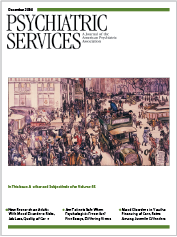My Ex-Best Friend: A Novel of Suburbia
Beth Brophy, the author of My Ex-Best Friend: A Novel of Suburbia, is a Washington journalist. This is her first novel. It is a mystery about the death of Lydia Finelli, Claire Newman's best friend of more than 23 years.
Five years before the start of the story, Lydia dropped Claire with no explanation. Claire, a journalist at Nationweek, was hurt and angry. She couldn't understand why her best friend would break off a relationship that began in childhood. The anguish is renewed after a chance meeting at a local bakery. Consequently, when Lydia calls and asks for help, Claire thinks it may be one of "life's rare opportunities to tie up a loose end" and agrees to stop by. No one answers the doorbell. She walks in and finds Lydia dead on her bed.
The police, without hesitation, label Lydia's death a suicide. She had been in therapy with a psychiatrist for severe depression for more than six years and was being treated with phenelzine. A list of foods on the refrigerator door is headed "Avoid Food or Beverages with Tyramine. Could Interact Dangerously with Medication. Don't Eat or Drink." In the trashcan are rinds of brie and camembert, foil from Lindt chocolates, and the remains of an Italian salami. It seems clear that Lydia has killed herself by eating foods on the list. She had attempted suicide once before by overdosing.
The book is written in the first person, with Claire as the narrator. She questions the idea of suicide and enlists the aid of Sallie, Lydia's mother, and then Jill, Lydia's neurologist husband Matthew's partner in a biotechnology company, to confirm her suspicions. She uncovers one incident after another until the murder suspects include Matthew, Randy, a psychiatrist who lives across the street and who may have had an affair with Lydia, and Lydia and Matthew's son's soccer coach. The plot is complicated but well researched. It includes an accurate description of the behavior of a woman with severe depression, the effect of tyramine combined with antidepressants, the attempt to make the death look like a cerebral vascular accident, and insider trading.
I have several minor criticisms. The children, especially Claire's four-year-old twins, do not speak like children. The events leading to the solution of the mystery are predictable and happen so fast they are like lights flashing as you drive down a highway. Although Randy is desperate to retrieve photos for which he has posed nude with Lydia, his behavior seems unbelievable. Matthew's depiction as a successful neurologist is clichéd. His "European suits, like his Mercedes, must be part of the evolution that started a decade ago when he began making a big deal out of what wine we drank with dinner."
However, the book is good reading. It is suspenseful, and the suspense carries the reader to the very end. Professionals will be interested in the way the author has turned a classic suicide story into a murder mystery.
Ms. Lanquetot is a writer and a teacher-coordinator of children's classes at the children's inpatient service in the department of psychiatry at Bellevue Hospital in New York City.



